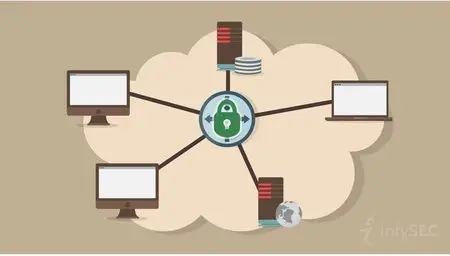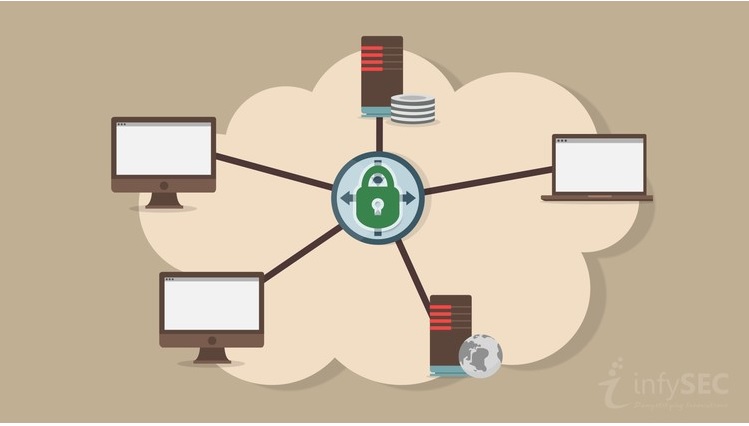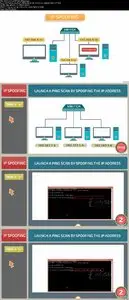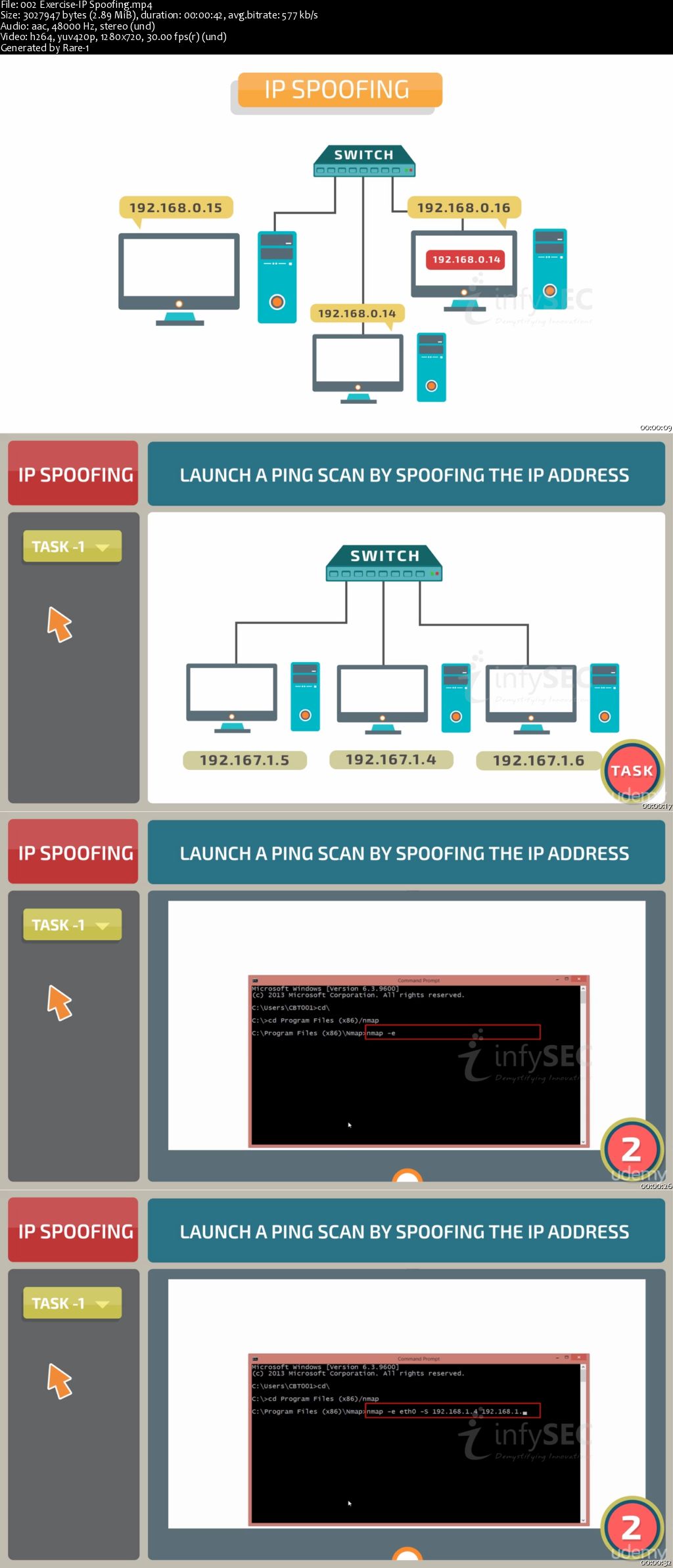Network Hacking and Security
WEBRip | MP4/AVC, ~853 kb/s | 1280 x 720 | English: AAC, 60.5 kb/s (2 ch), 48.0 KHz | 544 MB
Genre: IT & Software / Network & Security | Language: English | +Project Files
WEBRip | MP4/AVC, ~853 kb/s | 1280 x 720 | English: AAC, 60.5 kb/s (2 ch), 48.0 KHz | 544 MB
Genre: IT & Software / Network & Security | Language: English | +Project Files
Basic to advance level course for IT Security aspirants
Hi and welcome to our Network hacking and security course.
In this course, we will teach you how wired and wireless network attacks are performed in a simulated/test environment in an ethical way. This course helps the network security professional to mitigate these attack using the recommended solution at the end of each module.
You will be encouraged to practice what you have learned in a simulated environment via our practice "Audio Visual Exercise" session.
We have designed this course to enable those aspiring to enter the information security field to learn core concepts on network hacking in order to safeguard a network infrastructure. By the end of this course you will be familiar with how various types of wired and wireless network hacks are performed and you will be fully equipped to test and safegaurd a network infrastructure against various real time attack vectors.
This course has been specifically designed by a team of information security researchers who are acknowledged experts in their field.
This course has been designed to accelerate your learning process through the use of creative animations and easy to understand voice over narratives. Complex hacking concepts have been broken down into easy to understand modules.
Together, our team will walk you through the entire learning process step by step.
This course is perfect for existing network architects, network administrators, network security professionals as well as anybody who is passionate about developing their skills in the field of internet security. No prior training is required to take this course as we will start with the basics. We welcome anyone with a thirst for learning.
We look forward to having you join us. In the meantime, please feel free to take a look at our demo tutorial and exercise before you purchase the full course.
What are the requirements?
- This course includes all the material required either as video or as a downloadable link hence there is no pre required materials or softwares for this course.
- No prior training is required to take this course as we will start with the basics.
- We welcome anyone with a thirst for learning
What am I going to get from this course?
- Over 59 lectures and 2 hours of content!
- To understand what a network is?
- How communication happens in a network?
- How network attacks are classified based on Physical Layer of OSI model?
- How network attacks are classified based on Data link Layer of OSI model?
- How network attacks are classified based on Network Layer of OSI model?
- How network attacks are classified based on Transport Layer of OSI model?
- Learn possible countermeasures to defend against these attacks.
- Acquire an expertise on network security.
What is the target audience?
- The course covers ground basics about web, hence student with no prior knowledge on web can opt for this course.
- This course is perfect for existing network architects, network administrators, network security professionals as well as anybody who is passionate about developing their skills in the field of internet security.
- We have designed this course to enable those aspiring to enter the information security field to learn core concepts on wired and wireless network hacking
- Very rarely this course consist of software codes, however those codes are explained in a detailed manner. Hence one shouldn't bother about prior coding knowledge.
- By the end of this course you will be familiar with how various types of network hacks are performed and you will be fully equipped to test network infrastructure against various real time attack vectors.
Curriculum
Section 1: INTRODUCTION
Lecture 1 Network Objective and Outcome 00:43
The purpose of this course is to provide you with an insight into how network attacks are made and to teach you the skills you need in order to defend against these attacks.
Lecture 2 Network Basics 16:20
This section will cover how networks operate and explain how communication happens in a network.
Quiz 1 Network Basics 3 questions
Lecture 3 Introduction - Network hacking and security 01:52
This course will offer you an insight into various attack vectors that you may encounter when protecting a network
Section 2: Physical Layer Attacks - Wired
Lecture 4 Physical Layer Attack 01:58
The Physical Layer is the basis for any network and around 90% of the problems in a network arise at this layer. This section will explain how Physical Layer attacks are performed.
Quiz 2 Physical Layer-Wired 2 questions
Lecture 5 Mitigation technique-Physical layer security 1 slide
This module will explain which security mechanisms can be used to mitigate attacks that target the Physical Layer in the OSI Model.
Section 3: Datalink Layer Attacks - Wired
Lecture 6 MAC Spoofing 00:56
The MAC address - Media Access Control - is the unique physical address on a system’s NIC. Masking this address is called MAC Spoofing. This section explains how to do this and why it is useful to be able to do this.
Lecture 7 Exercise-MAC Spoofing 00:53
A step-by-step approach on how to spoof the MAC address.
Lecture 8 MAC Flooding 02:09
This section will deal with MAC Flooding. This is nothing but targeting a Network switch and manipulating its functionality to make it act as a hub by sending it a large number of data packets from different forged MAC addresses.
Lecture 9 Exercise-MAC Flooding 00:48
A step-by-step approach to performing a MAC Flooding Attack.
Lecture 10 ARP Poisoning 01:59
The Address Resolution Protocol Table is used to maintain a correlation between each MAC address and its corresponding IP address. When this table is poisoned such that all traffic from a system is redirected to that of an attacker it is called ARP Poisoning.
Lecture 11 Exercise-ARP Poisoning 01:27
Step by step approach to performing an ARP Poisoning Attack.
Lecture 12 DNS Spoofing 02:05
This session explains about DNS Spoofing. This is the method of poisoning the victim and redirecting the victim’s requests for a legitimate Domain to a fake.
Lecture 13 Exercise-DNS Spoofing 01:33
Practice performing a DNS Spoofing Attack.
Lecture 14 DHCP Starvation 02:36
DHCP Starvation is the act of flooding the DHCP server with DHCP Discover packets in such a way that the range of available IP addresses at the server is exhausted. This “starves”the legitimate client as there is no available IP Address. This is called a DHCP Starvation Attack.
Quiz 3 DHCP Starvation 3 questions
Lecture 15 Rogue DHCP Attack 04:10
A Rogue DHCP Attack is a sister attack to DHCP Starvation. In this session you will learn how this attack can be carried out.
Quiz 4 Rogue DHCP Attack 6 questions
Lecture 16 Mitigation technique-Datalink layer security 6 slides
You will learn various methods with which to mitigate the Attack Vectors discussed in this session.
Section 4: Network Layer Attacks
Lecture 17 IP Spoofing 01:28
In this session you will learn how to perform IP spoofing. This is simply the act forging a source IP address with the purpose of concealing the senders true identity.
Lecture 18 Exercise-IP Spoofing 00:42
Step by step approach to performing an IP Spoof Attack.
Lecture 19 Passive MITM 01:32
In this session you will learn how an attacker can sniff traffic between two systems without directly probing the victim. This is called a Passive MITM attack.
Lecture 20 Active MITM 00:47
In this session you will learn how to use an Active MITM Attack. This attack allows an attacker to sniff traffic between two systems by directly probing the victim.
Lecture 21 Exercise-MITM 02:50
A step by step approach allowing you to get hands on experience in performing MITM.
Lecture 22 ICMP Flooding 01:15
ICMP – Internet Control Message Protocol - is a protocol used to test the systems in a network for their availability. In this session you will learn how this protocol can be used to perform a DOS or Flooding Attack.
Lecture 23 Exercise-ICMP Flooding 00:58
Step by step approach to performing an ICMP Flooding Attack.
Lecture 24 SMURF Attack 01:44
In this session you will be instructed how to perform a SMURF Attack. Similar to an ICMP Flooding Attack, this is a different method of exploiting the ICMP protocol.
Lecture 25 Exercise-Smurf Attack 01:10
A step by step approach to performing a SMURF Attack.
Lecture 26 Ping of Death 01:00
This session deals with an archived attack known as Ping of Death. When a packet which is larger than that of the maximum size allowed is sent to a target computer, it results in a system crash called Ping of Death.
Quiz 5 Ping of Death Attack 1 question
Lecture 27 Mitigation technique-Network layer security 4 slides
You will learn methods for implementing Network Layer Security methods in order to mitigate the attacks pertaining to this layer of the OSI model.
Section 5: Transport Layer Attacks
Lecture 28 Transport Layer 01:53
This session gives an insight into how the Transport Layer works and the protocols that form the basis of the Transport Layer.
Lecture 29 TCP Flooding 02:55
This session deals with exploiting the TCP Protocol in order to flood the victim.
Lecture 30 Exercise-TCP Flooding 01:12
Step by step approach to performing a TCP Flooding Attack.
Lecture 31 UDP Flooding 02:08
This session deals with exploiting the UDP Protocol in order to flood the victim.
Lecture 32 Exercise-UDP Flooding 00:58
Step by step approach to performing a UDP Flooding Attack.
Lecture 33 Mitigation technique-Transport layer security 2 slides
Mitigation methods to achieve Transport Layer Security.
Section 6: Wireless Network Attacks
Lecture 34 Wireless Basics 03:37
This session briefly explains the basics that one must know about a Wireless Network.
Lecture 35 Introduction to Wireless Hacking and Security 01:07
An introduction to the various Wireless Network Attacks.
Section 7: Physical Layer Attacks - Wireless
Lecture 36 Physcial Layer Attack 01:45
This is the first layer in the OSI model and the attacks pertaining to this layer can be performed upon gaining a direct access to the network. This session gives an insight on how attacks pertaining to this layer can be performed.
Quiz 6 Physical Layer-Wireless 2 questions
Lecture 37 Mitigation technique-Wireless-Physical layer security 1 slide
In this session you will learn mitigation techniques that will enable you to enhance Physical Layer Security in a wireless network.
Section 8: Datalink Layer Attacks - Wireless
Lecture 38 War Driving 03:08
This session will show how a search for the wifi enabled networks, called War Driving, can be performed.
Lecture 39 Hidden Hotspot 03:39
Let's begin with a step by step approach to proving that employing "Hidden Hotspot" is a MYTH.
Lecture 40 Exercise-Pre Requisite 00:24
This is a pre-requisite that one needs to carry out while performing any kind of a wireless attack.
Lecture 41 Exercise-Hidden hotspot 01:13
Here is a step by step approach to prove that "Hiding Hotspot" from broadcasting itself to be a MYTH.
Section 9: Datalink Layer Attacks - WEP Cracking
Lecture 42 WEP Working 02:05
This session gives you an insight into how WEP works.
Lecture 43 Packet Injection 02:44
The method of meddling with an ongoing connection, by injecting new packets which pretend that they are a part of the normal communication, is known as packet injection or packet forging. This session deals with using this method to crack the WEP Password.
Lecture 44 Exercise-WEP Packet Injection 02:18
A step by step approach to cracking the WEP Key using the Packet Injection method.
Lecture 45 Caffe Latte 03:13
By grabbing a gratuitous ARP packet sent by any one of the clients, the attacker manipulates it to form an ARP request and sets up a fake AP, thus collecting packets from clients in a large number. This session explains how to crack the WEP Key using the grabbed packets.
Lecture 46 Exercise-Caffe Latte Attack 01:37
A step by step approach to performing a Caffe Latte Attack.
Lecture 47 Hirte Attack 02:42
This attack, unlike Caffe Latte, captures any IP or ARP packet to generate an ARP request and make the clients connected to the AP send large number of data packets, which the attacker captures. This session explains how to crack the WEP Key with these packets.
Lecture 48 Exercise-Hirte attack 01:25
A step by step approach to performing a Hirte Attack.
Lecture 49 Koreks chop chop 04:24
Another variant for cracking the WEP Key is called Korek's Chopchop Attack. This session explains how to crack the WEP key using this method.
Lecture 50 Exercise-Korek’s ChopChop 01:58
In this session you will practice performing a Korek's Chopchop Attack.
Section 10: Datalink Layer Attacks - WPA Cracking
Lecture 51 WPA Working 03:17
This session deals with the working methodology of a WPA enabled Network.
Lecture 52 WPA Cracking 02:42
This session will teach you how to crack the password of a WPA enabled network.
Lecture 53 Exercise-WPA Cracking 01:25
In this session, you will practice how to crack a WPA Password.
Section 11: Datalink Layer Attacks - WPA II Cracking
Lecture 54 WPA 2 Basics 01:18
This session deals with the working methodology of a WPA II enabled network.
Lecture 55 WPA 2 Cracking 02:04
This session will cover how to crack the password of a WPA II enabled network.
Lecture 56 Exercise-WPA 2 Cracking 01:23
In this practice session you will be guided through the process of cracking a WPA II Password.
Lecture 57 Rogue AP attack 04:27
Setting up your system as an access point without any password and luring clients to connect to it, thus acting as a Man-In-The-Middle, is called a Rogue AP attack.
This session provides an insight into how this attack can be performed.
Lecture 58 Exercise-Rouge Ap 01:58
A step by step approach on how to launch a Rogue AP Attack.
Lecture 59 Mitigation technique-Wireless-Datalink layer security 2 slides
Mitigation techniques to enhance Datalink Layer security in a wireless network.
LabView - Collective Books
Mega E-books Pack (2013)
Malware Centric E-book Collection
Huge Electricity, Magnetism, A..., Healing - EBooks Collection
Premium IT eBooks Collection
Huge Encyclopedias - EBooks Collection
Osprey Publishing - Military History Books Collection
Gale Encyclopedias - Full Pack
IT Books Collection (Basic - Intermediate - Advance)
Medicinal and Aromatic Plants - 50 Volume Set
Doctor Who ebooks Collection
Learning HTML Ultimate Collection
Comprehensive Robotics Books Collection
Great Royal Web Design Pack
Civil Engineering Geotechnical books
Luftwaffe Colours Collection
Many Thanks to Original uploader.
For More Rare Movies Check out my blog!
Download Links:
No Mirrors Please





